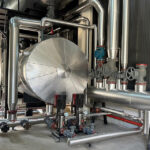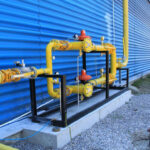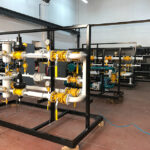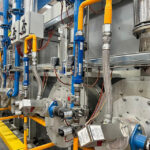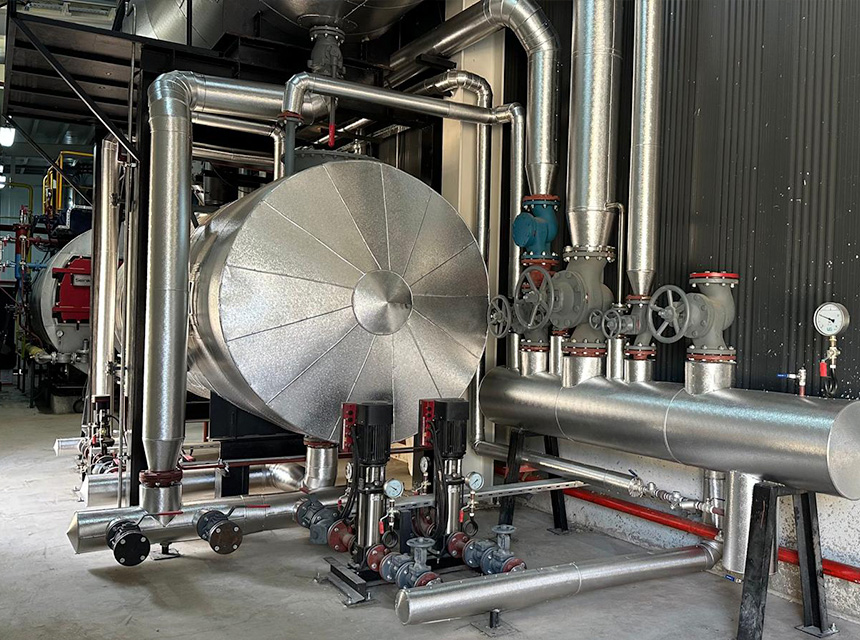
Key Considerations When Establishing a Steam Power Plant
Steam power plants are one of the fundamental building blocks of industrial production facilities, power plants, and large-scale heating systems. These systems are established to generate steam at high efficiency and use it in various processes. However, installing a steam power plant is not limited to boiler placement or pipeline installation. For a safe, efficient, and long-lasting system, numerous factors such as detailed engineering calculations, proper equipment selection, regulatory compliance, and maintenance planning must be taken into account. In particular, compliance with TS EN standards and industry-specific norms forms the foundation of the entire process.
Pre-installation site surveys and feasibility studies are critical for the success of the plant design. Parameters such as the physical structure of the site, required steam capacity, type of processes, fuel type to be used (natural gas, coal, biomass, etc.), and the condition of the existing infrastructure directly influence the project design process. Environmental conditions at the installation site should also be considered; for example, factors such as humidity, dust, and chemical gases may determine equipment selection.
The selection of the steam boiler is the heart of this system. The correct type of boiler should be chosen considering the required steam pressure level, temperature, and capacity. In most cases, three-pass, steel-bodied, automation-supported systems are preferred. If high temperature and pressure requirements are present, water-tube boiler systems should be used. Opting for equipment specifically designed for industrial steam systems is crucial for long-term efficiency.
The type of material used in piping systems must be tested for temperature and pressure resistance. While black steel pipes are generally preferred for steam lines, stainless steel solutions can be more efficient for condensate lines. Pipe insulation should be applied professionally to minimize heat loss. Pipe slopes and steam trap placements must be carefully calculated during the design stage to ensure proper condensate drainage.
Safety systems are among the most critical components of steam power plants. Safety valves against overpressure, temperature sensors, and level switches must be included in boilers and pipelines. Additionally, alarm systems integrated into the boiler’s structure and automatic fuel shut-off systems should be in place to control potential risks. These measures directly impact not only production safety but also worker safety.
Energy recovery systems have become indispensable components of modern steam power plants. Equipment such as economizers can recover heat from flue gases. This reduces fuel consumption and contributes to environmental sustainability. Furthermore, optimizing steam condensate systems can enhance overall system efficiency. Equipment such as heat exchangers or specialized condensate tanks help minimize energy loss.
The automation infrastructure of the plant is one of the most important factors determining operational efficiency and sustainability. Today, SCADA, PLC, and HMI integration is widely used in steam plant installations. These systems allow operators to monitor critical parameters such as temperature, pressure, and flow rate in real time, and intervene remotely when necessary. This minimizes human error and ensures uninterrupted system operation.
Post-installation testing processes are also extremely important. Hydrostatic tests, leak tests, automation tests, and initial firing should be thoroughly documented. Any shortcomings at this stage can jeopardize the system’s long-term stability. Additionally, all required documents for mandatory inspections by local regulatory authorities must be fully prepared.
Maintenance and service planning are essential for the healthy operation of steam power plant systems. Procedures such as filter changes, valve checks, insulation repairs, and safety valve tests should be performed at regular intervals, with service records stored digitally. Neglecting maintenance, especially in high-pressure systems, greatly increases the risk of failure.
Establishing a steam power plant is not only a technical implementation but also a strategic investment. The return on this investment is directly related not only to the quality of the materials used but also to engineering expertise, process management, and adherence to sustainability criteria. Every detail chosen during the installation process affects the system’s efficiency, maintenance needs, and energy costs in the years to come. Therefore, working with experienced teams and managing the project professionally from start to finish offers significant advantages.
In this context, in projects carried out by expert teams in the field of steam power plants and installations, both technical requirements and regulatory compliance are ensured without compromise. This guarantees both operational safety and long-term system durability.

